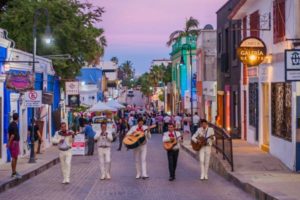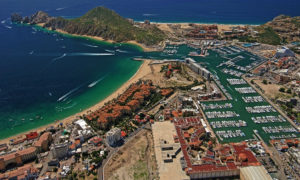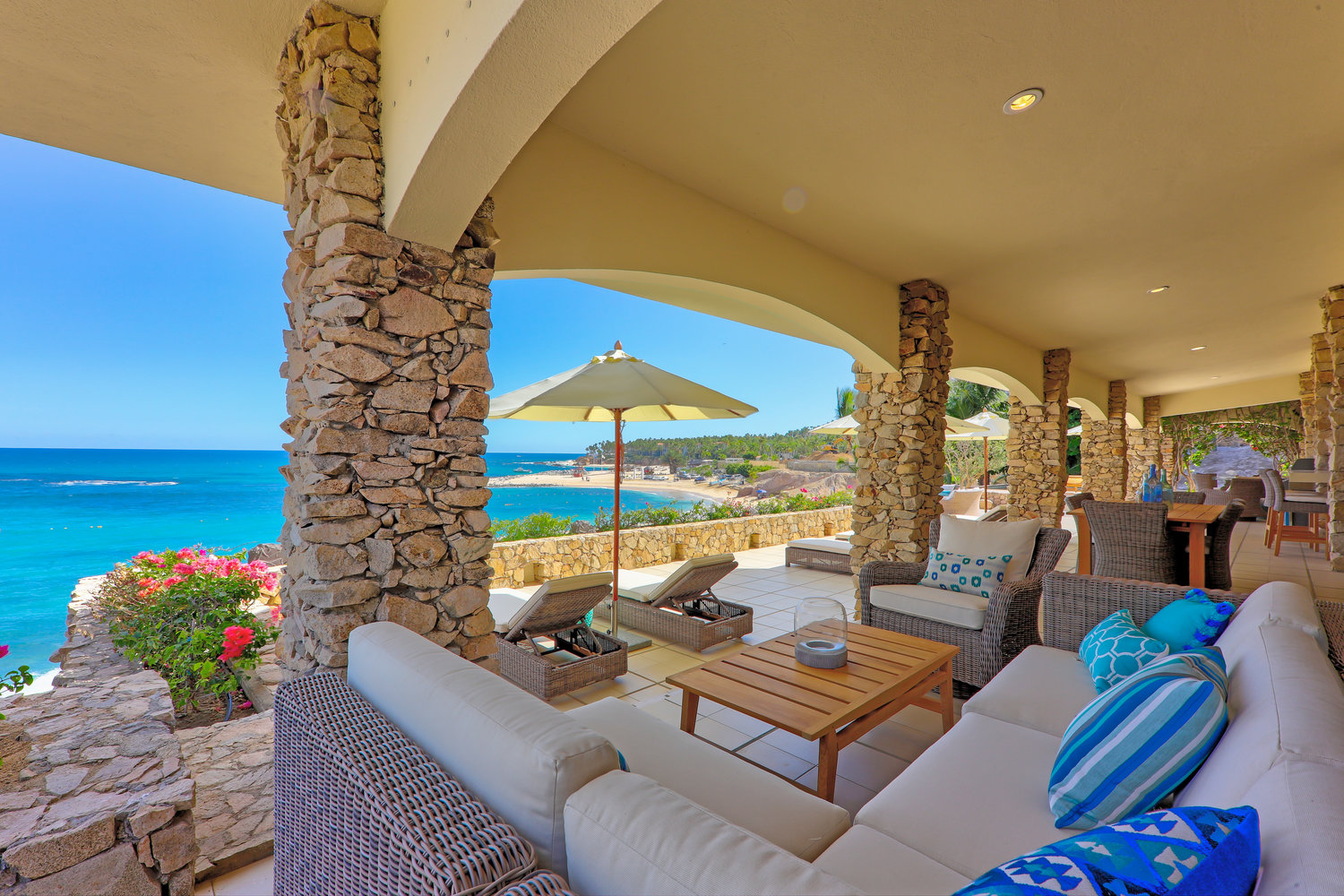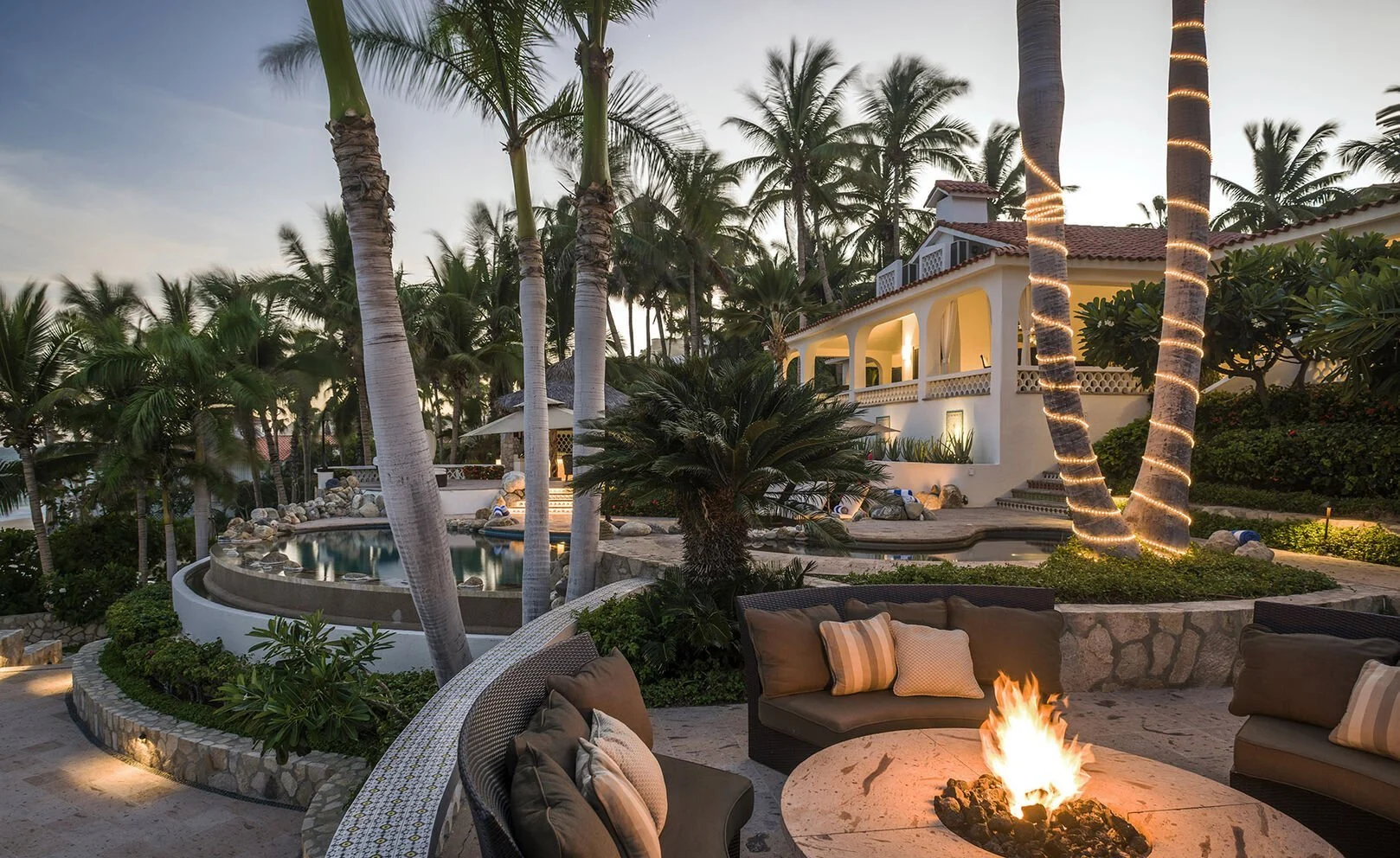Los Cabos in the Beginning
Located at the tip of the Baja California Peninsula, Los Cabos was at one time known as a remote and sleepy fishing town. It changed in 1977, when a nearby airport expanded and began accepting international flights. This small change was the impetus of a new resort city and gradually transformed Los Cabos into one of the most popular vacation destinations in Mexico.
 The San Dieguito Indians are the earliest evidenced humans that habited the Baja. By observing cave paintings, tools and relics unearthed, scientists date this colony back more than 9,000 years ago. They lived off of the land by clamming and fishing. Still to this day, Indians travel from Mexico mainland to attend their annual clamming tradition.
The San Dieguito Indians are the earliest evidenced humans that habited the Baja. By observing cave paintings, tools and relics unearthed, scientists date this colony back more than 9,000 years ago. They lived off of the land by clamming and fishing. Still to this day, Indians travel from Mexico mainland to attend their annual clamming tradition.
In 1535, Hernan Cortez arrived with a Spanish fleet, following reports of “fabulous pearls to be found.” Cortez and his crew tried to establish a colony near La Paz, but were driven out due to hostile natives and a lack of supplies.
It is reported that Pirates pillaged passing ships for 250 years by using the rock formation of El Arco to provide cover for their coordinated attacks on the Manila Galleons. Sir Thomas Cavendish was the most notable Pirate enterprise, which looted the Spanish galleon Santa Ana in 1587. Following the attack, Sir Cavendish and his crew divided the plunder between their two English ships and set sail back to England. Only Cavendish successfully made the return voyage, while the other ship was never found.
 In the 1960s, Cabo was visited by fishing enthusiasts who mostly arrived by sea-plane. Many of the well-known visitors were from Hollywood, such as Charlie Chaplin and John Wayne. To accommodate this demand, son of the former Mexican President, Abelardo Rodriguez Montijo, decided to build a hotel. Along with his Hollywood actress companion, Lucille Bremer, they created the original Hotel Hacienda in 1966.
In the 1960s, Cabo was visited by fishing enthusiasts who mostly arrived by sea-plane. Many of the well-known visitors were from Hollywood, such as Charlie Chaplin and John Wayne. To accommodate this demand, son of the former Mexican President, Abelardo Rodriguez Montijo, decided to build a hotel. Along with his Hollywood actress companion, Lucille Bremer, they created the original Hotel Hacienda in 1966.
In 1973, the Transpeninsular Highway 1 was completed. By connecting 1,000 miles, from the USA/Mexico Border in Tijuana to the tip of the Baja in Cabo San Lucas, the highway evolved the region by increasing modernization with new ability to drive goods and people. Before the highway, the 1,000-mile journey took close to 2 weeks and after construction was easily achieved in a matter of days. In less than a year, the population of Southern Baja reached 80,000 and Baja California Sur became Mexico’s 30th state.
By the early 1990s, Los Cabos was already a bustling hub for water sports, nightlife seekers, the handicraft industry (as some people call “chochkies”) and fishing tourism. When the popular white sand beaches in Cancun were obliterated in 2005 after Hurricane Wilma, tourism re-directed their travel and the popularity of Los Cabos grew exponentially.
Los Cabos Today
 Today, Los Cabos is one of the fastest growing destinations in Mexico. What was once a small fishing village is now a favorite winter destination for those that live in colder climates, from November to February. The most popular areas of Los Cabos are categorized into three major areas: San Jose del Cabo, Cabo San Lucas and The Tourist Corridor. Known to many as “the old town,” San Jose del Cabo, is located near the Los Cabos International Airport (SJD). Guests and Homeowners love this area because it maintains its old-world Mexico charm while also being home to new, award-winning resorts. San Jose del Cabo consists of golf, restaurants, swimming beaches, a marina and is the entrance to the East Cape.
Today, Los Cabos is one of the fastest growing destinations in Mexico. What was once a small fishing village is now a favorite winter destination for those that live in colder climates, from November to February. The most popular areas of Los Cabos are categorized into three major areas: San Jose del Cabo, Cabo San Lucas and The Tourist Corridor. Known to many as “the old town,” San Jose del Cabo, is located near the Los Cabos International Airport (SJD). Guests and Homeowners love this area because it maintains its old-world Mexico charm while also being home to new, award-winning resorts. San Jose del Cabo consists of golf, restaurants, swimming beaches, a marina and is the entrance to the East Cape.
 The highest traffic area in Los Cabos is Cabo San Lucas, which hosts a plethora of restaurants, nightlife venues and beach bars, many thrill seekers and spring breakers consider Cabo San Lucas “the entertainment hub of the Los Cabos area.” The third area is called The Corridor, which is actually a highway that connects Cabo San Lucas and San Jose del Cabo. It hugs the stunning coastline which is bordered by resorts, condos, and golf courses. Until 2018, all transportation from the SJD airport to Cabo San Lucas would drive this highway. Now there is a toll-road that most transportation companies prefer to use. Unfortunately, visitors miss out on the incredible beach views that can only be seen from The Tourist Corridor. We always recommend our drivers to drive guests on the Coastal Highway so they don’t miss the sights that made Cabo what it is today.
The highest traffic area in Los Cabos is Cabo San Lucas, which hosts a plethora of restaurants, nightlife venues and beach bars, many thrill seekers and spring breakers consider Cabo San Lucas “the entertainment hub of the Los Cabos area.” The third area is called The Corridor, which is actually a highway that connects Cabo San Lucas and San Jose del Cabo. It hugs the stunning coastline which is bordered by resorts, condos, and golf courses. Until 2018, all transportation from the SJD airport to Cabo San Lucas would drive this highway. Now there is a toll-road that most transportation companies prefer to use. Unfortunately, visitors miss out on the incredible beach views that can only be seen from The Tourist Corridor. We always recommend our drivers to drive guests on the Coastal Highway so they don’t miss the sights that made Cabo what it is today.







